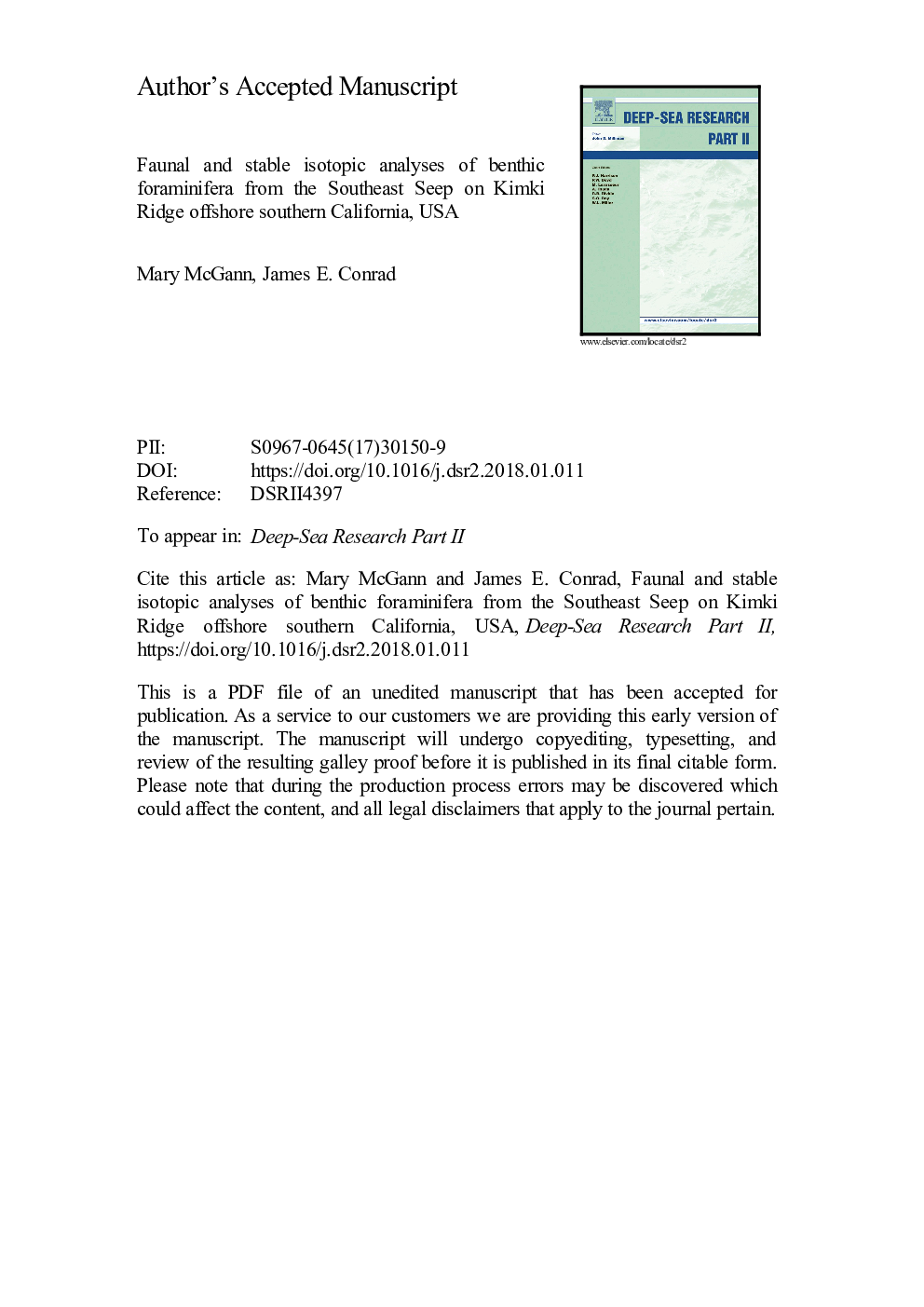| کد مقاله | کد نشریه | سال انتشار | مقاله انگلیسی | نسخه تمام متن |
|---|---|---|---|---|
| 8884361 | 1626392 | 2018 | 85 صفحه PDF | دانلود رایگان |
عنوان انگلیسی مقاله ISI
Faunal and stable isotopic analyses of benthic foraminifera from the Southeast Seep on Kimki Ridge offshore southern California, USA
ترجمه فارسی عنوان
تجزیه و تحلیل ایزوتوپهای فون و پایدار از فروامینفره بنتون از خاک جنوب شرقی در کیمکی ریج افریقای جنوبی کالیفرنیا، ایالات متحده
دانلود مقاله + سفارش ترجمه
دانلود مقاله ISI انگلیسی
رایگان برای ایرانیان
کلمات کلیدی
موضوعات مرتبط
مهندسی و علوم پایه
علوم زمین و سیارات
زمین شناسی
چکیده انگلیسی
No endemic species were found at the seep site and most of the taxa recovered there have been reported previously from other seep or low oxygen environments. Q- and R-mode cluster analyses clearly illustrated differences in the faunal assemblages of the seep and non-seep sites. The living assemblage at Southeast Seep was characterized by abundant Takayanagia delicata, Cassidulina translucens, and Spiroplectammina biformis, whereas the non-seep San Pedro Basin reference assemblage was comprised primarily of Chilostomella oolina and Globobulimina pacifica. Density and species richness were lower at the seep site compared to the non-seep site, reflecting the harsher living conditions there. The dead assemblage at the seep site was dominated by Gyroidina turgida compared to Cassidulina translucens at the ~ 1030â¯m non-seep site and Cassidulina translucens, Pseudoparrella pacifica, and Takayanagia delicata at the 739â¯m non-seep site. Density was three times lower at Southeast Seep than at the non-seep sites of comparable water depth but species richness was ~ 30% higher. Stable carbon isotopic values were considerably depleted in the seep samples compared to the non-seep samples, with a progression from lightest to heaviest average δ13C values evident at the seep site reflecting microhabitat preference and vital effect: the deep infaunal species of Globobulimina, the shallow infaunal species Uvigerina peregrina, the epifaunal species Cibicidoides wuellerstorfi, and the shallow infaunal but aragonite-shelled species Hoeglundina elegans. The δ13C values downcore among each benthic species indicates ongoing fluid seepage through at least the last 3800â¯calâ¯yr B.P. at Southeast Seep. Besides the continual local seepage, evidence from δ13C values of planktic foraminifera in the seep core suggest two pulses of methane (at 3000 and 3700â¯calâ¯yr B.P.) were released that were large enough to influence much of the water column. Paired benthic and planktic foraminiferal stable oxygen isotope records provide evidence that there were no paleoenvironmental changes such as increased bottom-water temperature or changes in oxygen isotopic composition of bottom and pore waters during this 3800-year record to induce the methane releases. Instead, Southeast Seep appears to be the result of local faulting providing pathways for fluid to flow to the seafloor at a fault stepover or transpressional bend in the regional strike-slip system.
ناشر
Database: Elsevier - ScienceDirect (ساینس دایرکت)
Journal: Deep Sea Research Part II: Topical Studies in Oceanography - Volume 150, April 2018, Pages 92-117
Journal: Deep Sea Research Part II: Topical Studies in Oceanography - Volume 150, April 2018, Pages 92-117
نویسندگان
Mary McGann, James E. Conrad,
